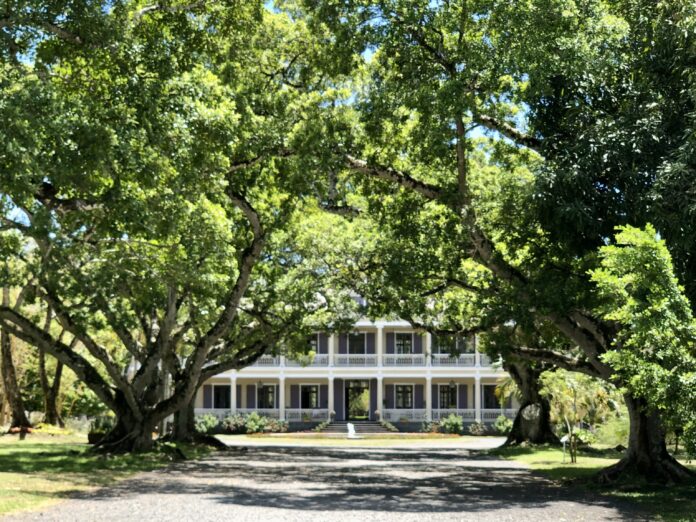When it all began…
In 1839, Christian Wiehe married Emilie Bourgault du Coudray, heiress to the Labourdonnais estate. The family grew – they had eight children, including two sons – and from 1856 to 1859, the château we know today was built as his principal residence. When Christian died in 1878, his youngest son Adrien took over the estate. the management of the sugar estate and took it to the top. He didn’t know it at the time, but his descendants would live here for a century and a half… until 2006.
When everything came to life…
In 2010, four years of work were completed to transform the private residence into a museum, under the French direction of museologist Claude Fauque and scenographer Alexandre Fruh. Personification of A gentle journey through the island’s colonial heritage, the remarkable Victorian building, mainly constructed of teak, is encircled on two levels by an imposing gallery enhanced by shutters painted in the iconic lilac-mauve color – discovered by scraping away the layers of paint that have been applied to the facades for generations. Like the state of conservation of the furniture and objects, all imported from France and England in the 19th century, the art of living of the period is perfectly restored and its soul watched over by the château’s curator, Bernard Maurice.
When everything changed…
The 540-hectare Domaine de Labourdonnais (DDL) now extends far beyond the mansion and its gardens. Vegetables are grown. Tropical fruits from the orchards are processed (several varieties of mango have been named after the château’s inhabitants for over a century: Odette, Françoise, Sybille…). A range of award-winning rums is produced in the distillery. A grocery store, restaurants, sports and wellness activities enhance the site.
But the new Quartier des Serres is still the most surprising – both in terms of its accomplished realization and its desire to blend history with the present.
When yesterday weaves tomorrow…
In 1972, in the heart of the longères – the 19th-century stone buildings that housed the sugar estate’s ploughmen at the time – the anthurium greenhouses were created, the estate’s first agricultural free zone. Exported to Europe, Japan and America, the flowers were cultivated until 2002, when the DDL group diversified and relocated the greenhouses. Today, the longères house offices and a nursery. La Terrasse restaurant occupies a former soccer field. A windmill has been restored, and a gate and shutters recycled. The remains of the train tracks that once crossed the property add to the testimony of a past remarkably integrated into the atypical, cultural, commercial, vegetal… Quartier des Serres.





